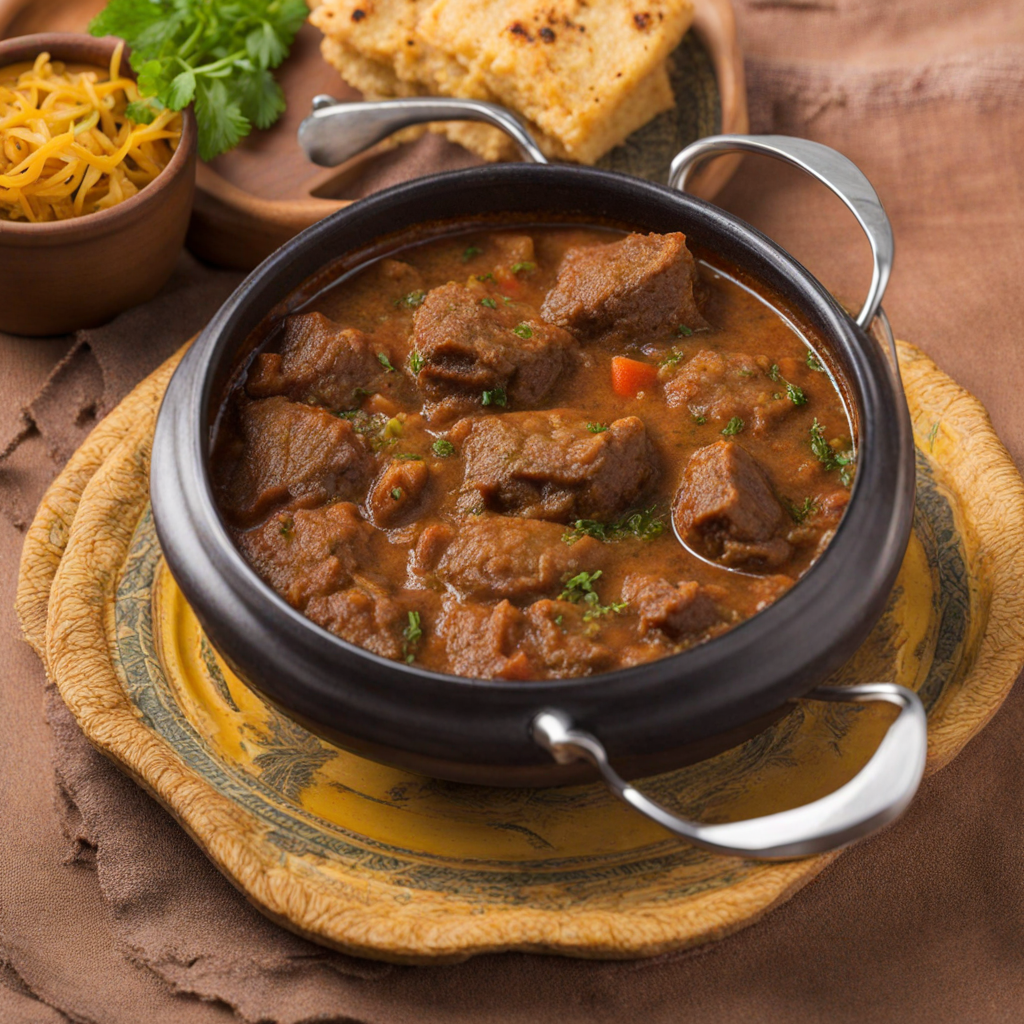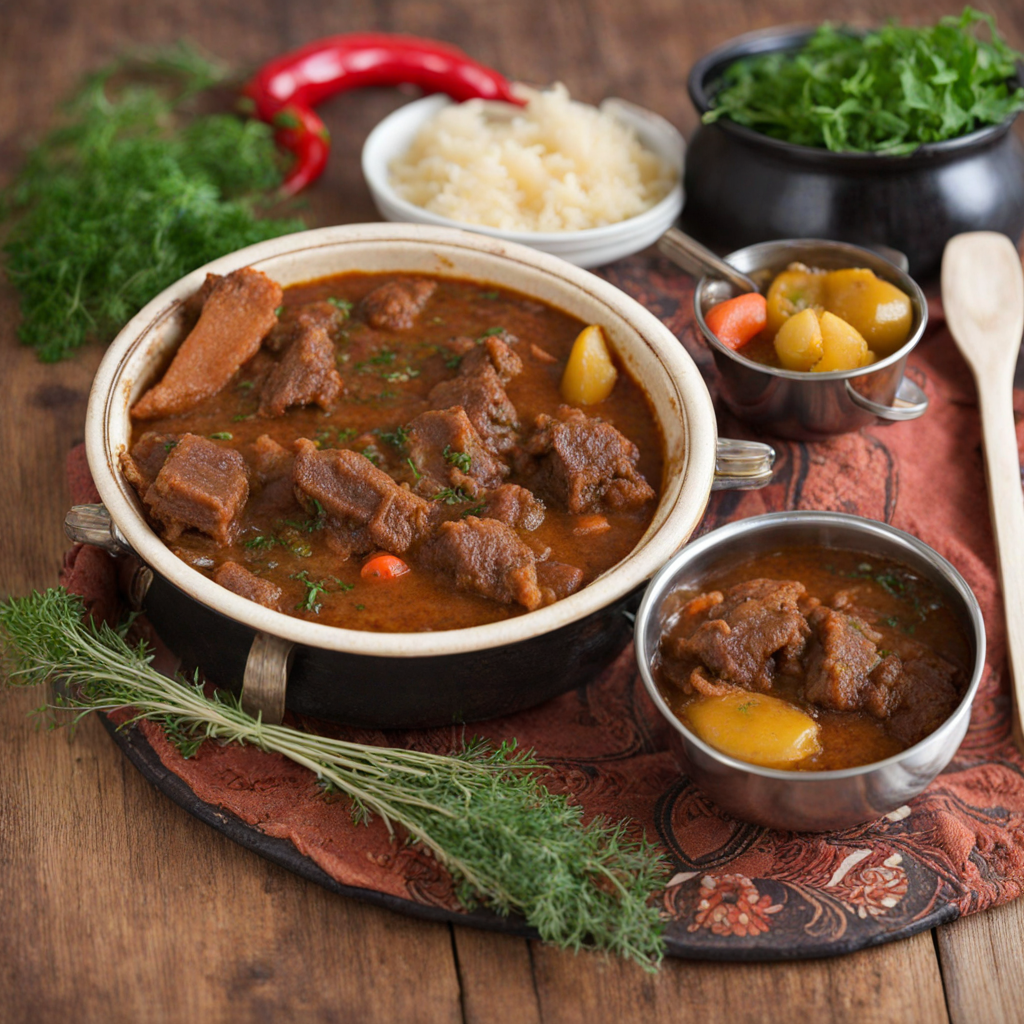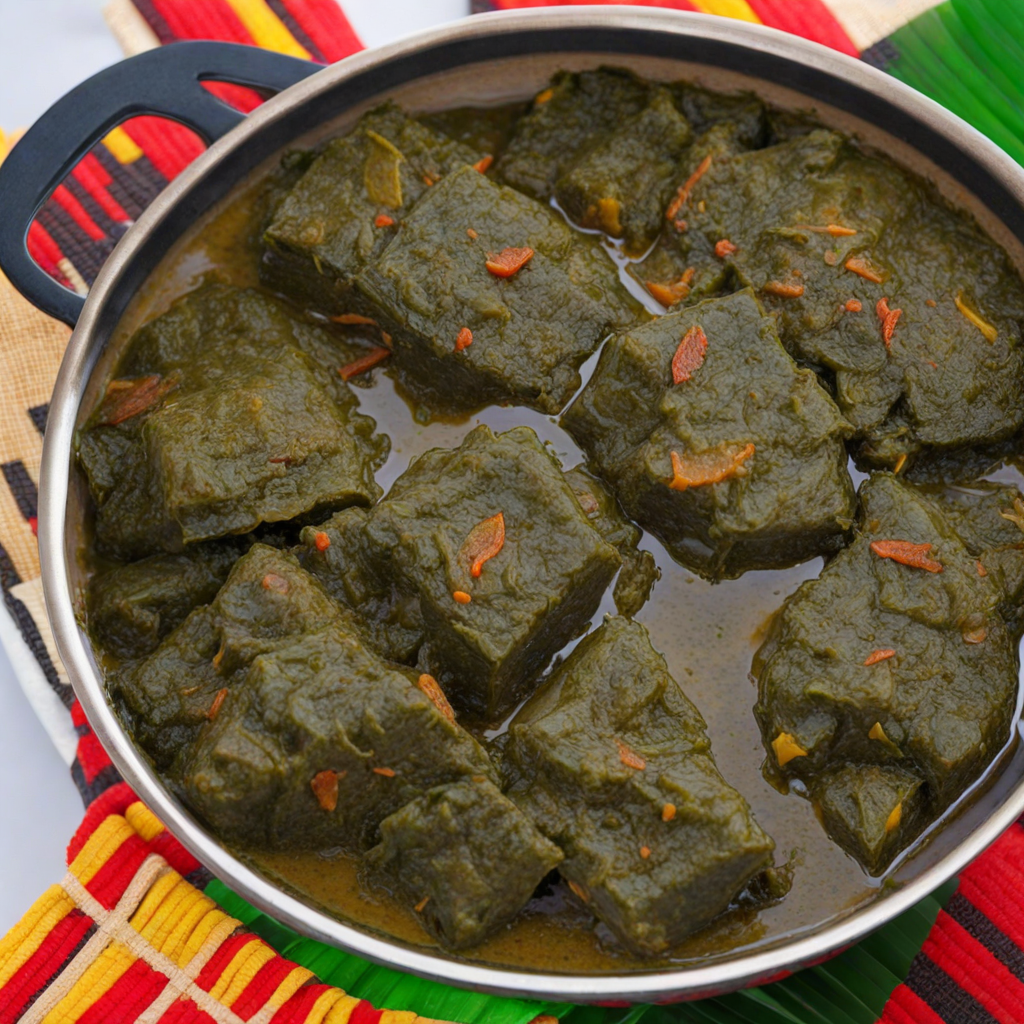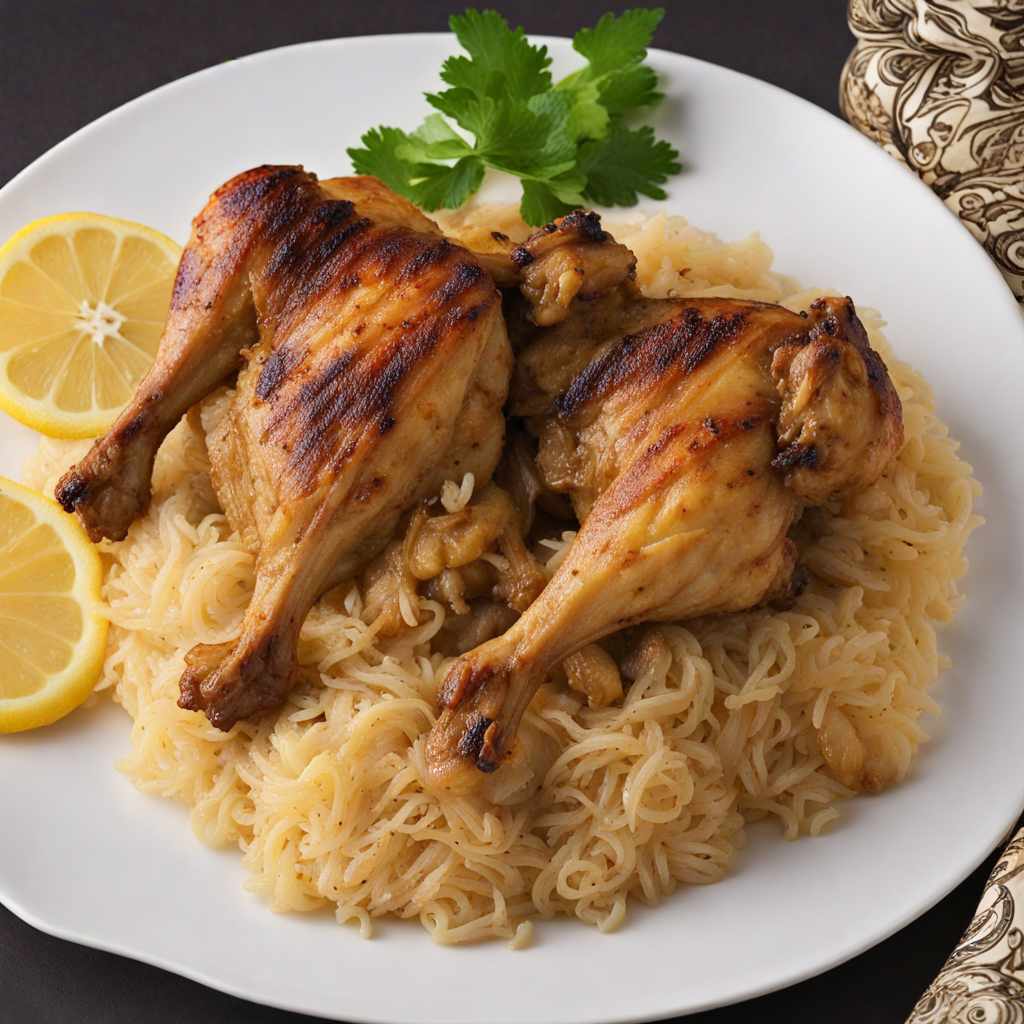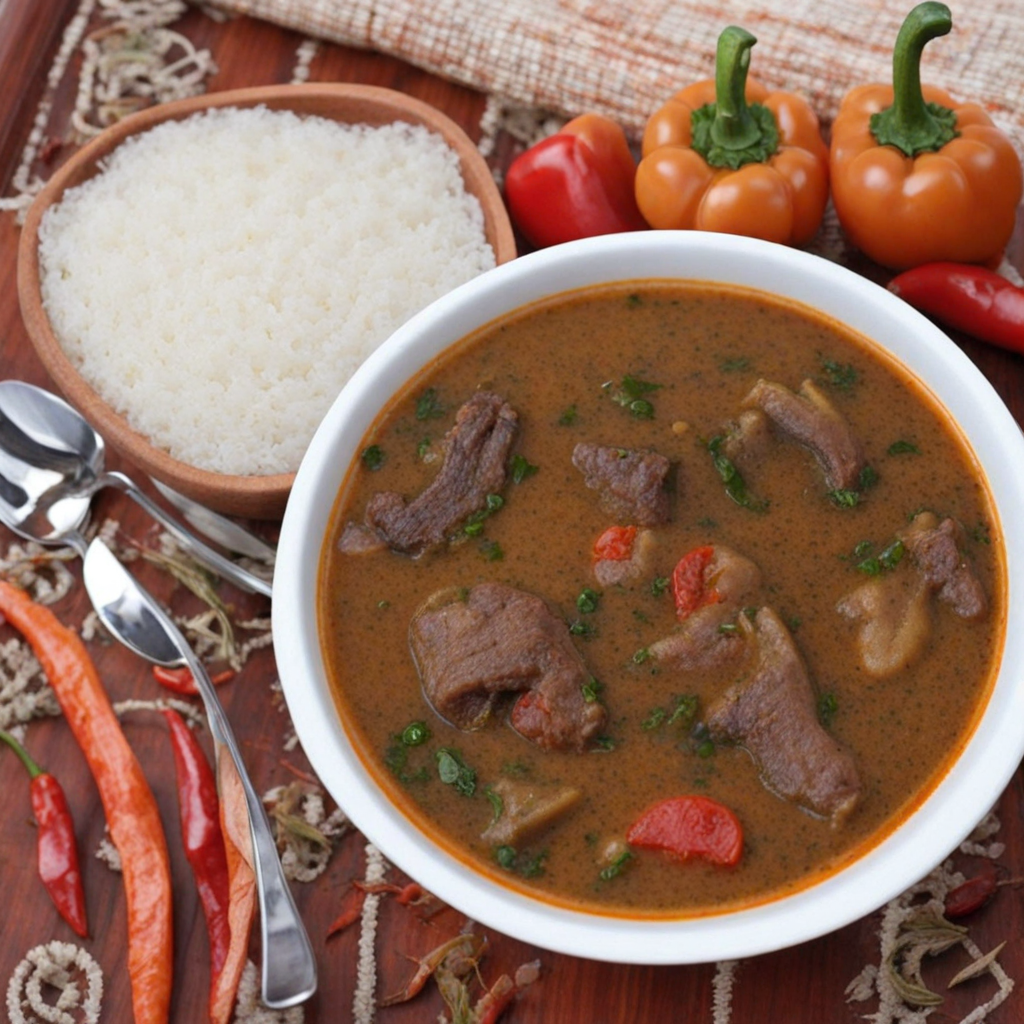Kansiyé
Kansiyé is a delightful dish that hails from the vibrant culinary landscape of Guinea. This traditional meal primarily features cassava, a starchy root vegetable that is a staple in many West African diets. The cassava is typically grated and then fermented, which imparts a unique tangy flavor that is both refreshing and satisfying. Once prepared, the mixture is further transformed into cakes or patties that are then fried to golden perfection, resulting in a crispy exterior that gives way to a soft, chewy interior. The texture and taste of Kansiyé are a beautiful representation of the region’s rich agricultural heritage and culinary ingenuity. The accompanying flavors in Kansiyé can vary, as it is often served with a variety of spicy sauces or dips that elevate the dish to new heights. Popular accompaniments include a spicy pepper sauce made from local chili peppers, garlic, and herbs, which adds a fiery kick that complements the neutral taste of the cassava. Additionally, some variations may include the addition of fish or meat, providing an extra layer of flavor and protein that makes it a hearty meal. The balance of heat and flavor makes each bite an exciting experience, inviting food lovers to savor the complexities of Guinean cuisine. What makes Kansiyé truly special is its role in community gatherings and celebrations, symbolizing togetherness and shared heritage. It is often enjoyed during festive occasions, bringing people together to savor both the dish and the company around the table. The experience of enjoying Kansiyé goes beyond just taste; it’s about embracing the culture, stories, and traditions that accompany each plate, making it a must-try for anyone eager to explore the delicious tapestry of African flavors.
How It Became This Dish
Kansiyé: A Culinary Journey Through Guinea's Heritage The rich tapestry of Guinea's culinary landscape is woven with threads of history, culture, and tradition, and at the heart of this tapestry lies a dish known as Kansiyé. This savory and flavorful food not only satisfies the palate but also embodies the cultural significance and communal values of the Guinean people. The history of Kansiyé is a fascinating tale of origin, evolution, and the role food plays in the social fabric of society. Origin of Kansiyé Kansiyé has its roots in the diverse ethnic groups of Guinea, particularly the Malinke, Soussou, and Fulani communities. These groups have historically inhabited the region, bringing with them a rich heritage of agricultural practices, culinary techniques, and local ingredients. The name "Kansiyé" is believed to derive from the local Manding language, with variations that reflect both linguistic diversity and regional dialects. Traditionally, Kansiyé is made from a base of rice or cornmeal, which is cooked to a smooth and thick consistency. The dish is often accompanied by a variety of savory sauces or stews, typically made from vegetables, meats, or fish. Groundnut (peanut) paste is a common ingredient that adds a creamy texture and nutty flavor. The dish exemplifies the resourcefulness of the Guinean people, who have mastered the art of using locally-sourced ingredients to create a meal that is both nutritious and satisfying. Cultural Significance Kansiyé is more than just a dish; it is a symbol of community and togetherness in Guinean culture. It is often prepared for special occasions, such as weddings, religious festivals, and family gatherings, where the act of sharing food becomes a communal ritual. The preparation of Kansiyé can involve entire families coming together, demonstrating the importance of kinship and cooperation in Guinean society. The dish also carries spiritual significance. In many African cultures, food is seen as a means of connecting with ancestors and honoring traditions. By preparing and sharing Kansiyé, families not only celebrate their heritage but also reinforce their cultural identity. The act of sharing food serves as a reminder of the bonds that tie communities together, fostering a sense of belonging and continuity. Ingredients and Variations While the essential components of Kansiyé remain consistent, the dish has evolved over time, with various regional and familial adaptations. The base, whether rice or cornmeal, is typically complemented by a variety of ingredients, reflecting seasonal availability and personal preference. Common additions include leafy greens, such as cassava leaves or okra, which contribute flavor and nutritional value. Meats such as chicken, goat, or fish are frequently used, often marinated with traditional spices and herbs to enhance their flavor. The use of groundnut paste is a hallmark of Kansiyé, adding richness to the dish. In urban areas, one might find modern twists on Kansiyé that incorporate global influences, including the use of spices from other cultures or the incorporation of dairy products. Development Over Time The evolution of Kansiyé is deeply intertwined with the socio-economic changes in Guinea. Historically, agriculture has been the backbone of the Guinean economy, with rice and corn serving as staple crops. As agricultural practices developed, so too did the methods of preparing and serving Kansiyé. In the pre-colonial era, Kansiyé was primarily prepared in rural communities, where traditional farming and cooking methods prevailed. However, with the advent of colonialism and the subsequent introduction of new agricultural techniques and crops, the preparation of Kansiyé began to diversify. The introduction of irrigation and improved farming tools allowed for increased crop yields, providing a wider array of ingredients for the dish. Post-independence, Guinea underwent significant social and political changes, which also impacted culinary practices. With the rise of urbanization, traditional dishes like Kansiyé began to adapt to the fast-paced lifestyles of city dwellers. Street vendors emerged, offering quick and affordable versions of the dish, making it accessible to a broader audience. This transformation not only preserved the essence of Kansiyé but also introduced it to new generations, ensuring its continued relevance in contemporary Guinean society. Global Influence and Recognition In recent years, the global interest in African cuisine has brought dishes like Kansiyé into the spotlight. As chefs and food enthusiasts seek to explore and celebrate the flavors of Guinea, Kansiyé has found its way onto international menus, often presented with a modern flair. This exposure has contributed to a growing appreciation for the culinary traditions of Guinea and has opened avenues for cultural exchange. Culinary festivals and food fairs have also played a role in promoting Kansiyé, as chefs showcase their unique interpretations of the dish. This not only helps preserve the traditional methods of preparation but also encourages innovation, as new ingredients and techniques are explored. The global awareness surrounding Kansiyé serves as a testament to the resilience of Guinean culture and its ability to adapt while remaining rooted in tradition. Conclusion Kansiyé is more than a dish; it is a culinary emblem of Guinea's rich cultural heritage, embodying the values of community, cooperation, and resilience. Its origins are steeped in the traditions of diverse ethnic groups, and its evolution reflects the socio-economic changes that have shaped Guinea over the years. As Kansiyé continues to adapt and thrive in both local and global contexts, it remains a beloved staple that nourishes not only the body but also the spirit of the Guinean people. In a world that is increasingly interconnected, the story of Kansiyé serves as a reminder of the importance of preserving culinary heritage and celebrating the diverse flavors that define our shared humanity. Through each bowl of Kansiyé, the stories of generations are told, bridging the past with the present and ensuring that the spirit of Guinea lives on.
You may like
Discover local flavors from Guinea


